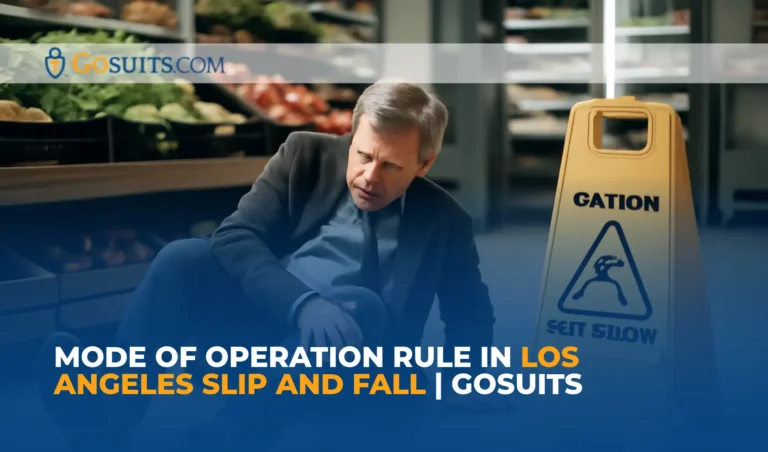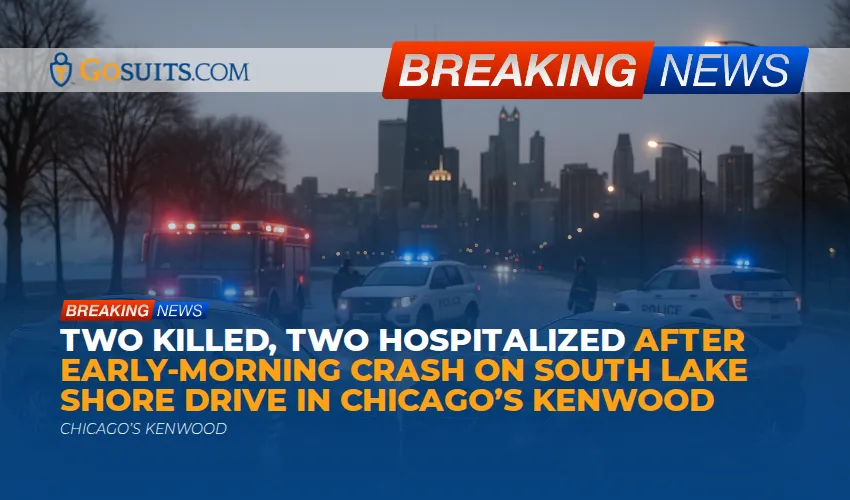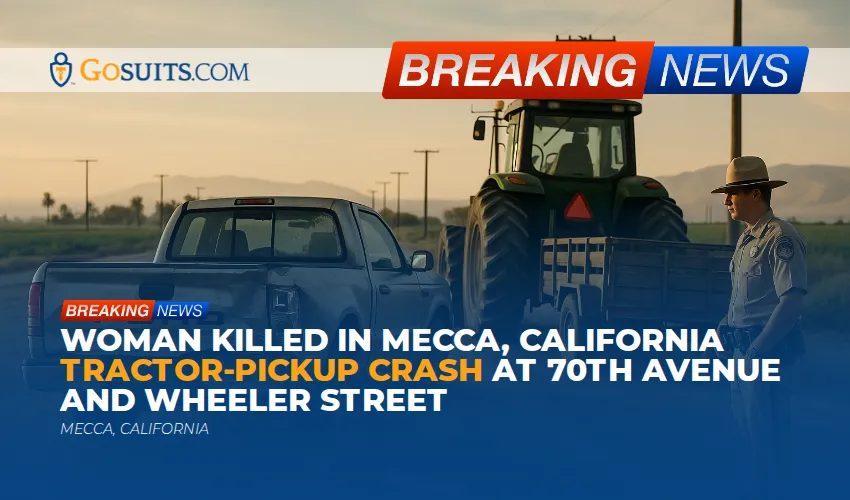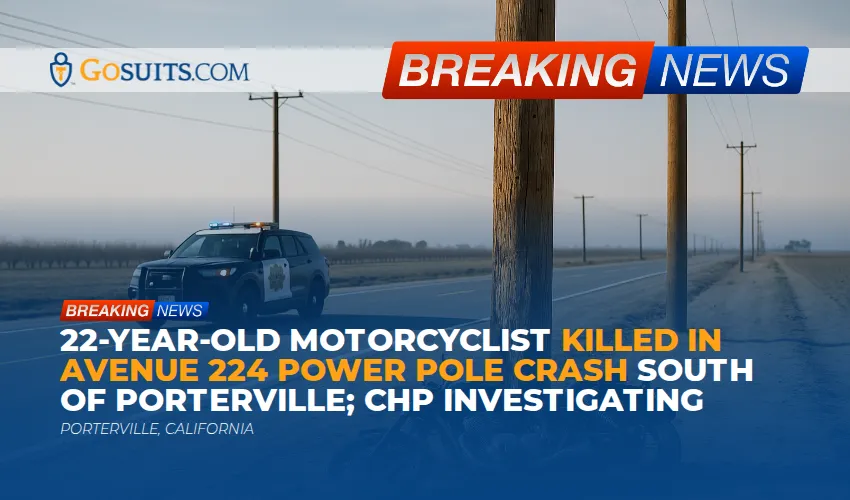- What is the mode of operation rule in a Los Angeles slip and fall case?
- Does California recognize the mode of operation rule, or do I still have to prove notice?
- How do self-service stores in Los Angeles affect slip and fall liability?
- What is constructive notice in California premises liability?
- What evidence helps prove a Los Angeles slip and fall caused by a store’s operating methods?
- What is the burden of proof in a California slip and fall lawsuit?
- How does comparative negligence work in California slip and falls?
- What is the statute of limitations for California personal injury slip and fall claims?
- What if I slipped and fell on public property in Los Angeles?
- What medical documentation and damages are relevant in a premises case?
- How should I handle insurance communications after a store slip and fall?
- How might defendants defend a mode of operation theory in LA County courts?
- Are there Los Angeles-specific considerations for premises liability investigations?
- How do other states treat the mode of operation rule compared to California?
- How do I preserve surveillance video and inspection records from a store?
- Why is legal help important in a Los Angeles slip and fall claim?
- How does GoSuits approach Los Angeles slip and fall cases?
- Resources
What is the mode of operation rule in a Los Angeles slip and fall case?
The mode of operation rule is a way of analyzing premises liability in self-service businesses where customers handle merchandise or food without help from employees. The core idea is that a business’s chosen method of operating can make certain hazards reasonably foreseeable, such as produce dropping on a supermarket floor or liquid leaking from self-service beverage stations. When that happens, the law may allow you to prove negligence without pinpointing exactly how long the hazard was on the floor, because the risk flows from the store’s regular operations.
In a typical Los Angeles slip and fall, a plaintiff must show the property owner either knew about the dangerous condition or should have discovered it through reasonable care. The mode of operation framework focuses attention on whether the business’s self-service setup predictably creates recurring hazards, and whether the store used reasonable measures to find and fix those hazards.
Does California recognize the mode of operation rule, or do I still have to prove notice?
California courts have not adopted a broad, stand-alone mode of operation doctrine that automatically presumes negligence in every self-service setting. Instead, California relies on well-established premises liability principles: the plaintiff must prove the defendant knew, or through reasonable care should have known, about a dangerous condition and failed to correct or warn about it. This is reflected in the Judicial Council of California Civil Jury Instructions, which require proof that the defendant knew or should have known of the condition and failed to fix it or warn about it. See the California Civil Jury Instructions resource page for the Premises Liability series published by the Judicial Council of California.
Even without a separate doctrine, California law recognizes that a store’s operating methods matter. California courts permit juries to infer constructive notice when a store fails to inspect at reasonable intervals or when its business practices make hazards foreseeable. The California Supreme Court held that evidence of inspection practices, or the lack of them, can support an inference that a transitory spill existed long enough that the store should have discovered it through reasonable care.
California also has long recognized that when the defendant’s own method of displaying or handling merchandise creates recurrent dangers, the defendant can be liable without proof of actual notice of a particular spill. Earlier California cases discuss how business practices can create foreseeable hazards that require precautions. While these decisions do not label the concept as a “mode of operation rule,” they reflect the principle that business methods that regularly generate hazards heighten the duty to inspect and make notice easier to infer.
How do self-service stores in Los Angeles affect slip and fall liability?
Self-service grocery stores, big box retailers, and cafeterias are common throughout Los Angeles, from Downtown LA to Santa Monica, Long Beach, the San Fernando Valley, the San Gabriel Valley, the Westside, South Bay, Pasadena, Glendale, and Beverly Hills. In these businesses, customers are invited to handle merchandise and food, which increases the risk that items will fall, leak, or break.
Legally, self-service operations influence the reasonableness of the store’s inspection and cleanup practices. For example:
- Recurrent hazards, such as produce on the floor or leaks from refrigeration, may make more frequent inspections reasonable.
- Spill-prone areas like beverage stations, salad bars, floral sections, or freezer aisles often call for heightened monitoring.
- Employee staffing and sweep schedules are judged against foreseeable risks created by the store’s layout and customer traffic patterns.
A Los Angeles jury can consider whether the store’s methods made the danger foreseeable and whether the store’s inspection schedule and response plan were adequate in light of local traffic levels and the store’s specific layout.
What is constructive notice in California premises liability?
Constructive notice means the owner or occupier should have known about the hazard if they had exercised reasonable care. Under California law, you can prove constructive notice by showing:
- Duration: The condition existed long enough that a reasonable inspection would have discovered it.
- Inadequate inspections: The store lacked a reasonable system for inspections or could not show when the last inspection occurred.
- Recurrent conditions: The store’s operation made the hazard sufficiently foreseeable that frequent inspections or protective measures were needed.
California’s Supreme Court confirmed that proof of inspection practices is central to constructive notice. If a store cannot demonstrate reasonable inspection intervals, a jury may infer that a spill was on the floor long enough to be discovered with reasonable care. See Ortega v. Kmart Corp., 26 Cal. 4th 1200 (2001). You can locate Ortega on Google Scholar.
California’s general negligence duty is codified at Civil Code section 1714, which states that everyone is responsible for injuries caused by their lack of ordinary care. See California Civil Code section 1714 on the California Legislative Information website.

What evidence helps prove a Los Angeles slip and fall caused by a store’s operating methods?
Evidence showing how the business operates is often the difference between winning and losing in a Los Angeles slip and fall. Helpful items include:
- Inspection and sweep logs: Written or electronic records of floor checks, with timestamps and employee initials, are central to proving or disproving constructive notice. In cases influenced by a mode of operation theory, logs should match peak times in spill-prone areas.
- Video surveillance: Cameras often capture the formation of a spill, how long it remained, and whether employees walked past it. This can show both notice and response.
- Incident reports: Internal store reports and root-cause analyses can reveal prior similar events, employee observations, and remedial measures.
- Maintenance records: Work orders for refrigeration units, roof leaks, or plumbing show whether the store knew about recurring leaks or condensation issues.
- Layout and policies: Floor plans, staffing levels, duty rosters, and written policies for inspections, spill kits, and customer service coverage help evaluate the reasonableness of the store’s plan.
- Prior incidents: Evidence of prior slip and fall events in the same area can support foreseeability when similar to the incident at issue.
- Weather and delivery schedules: In LA County, rain events are less frequent but can create strong risks at entrances. Delivery time records can correlate with debris or pallet wrap on floors.
- Footwear and warnings: Signage placement, availability of mats, cone usage, and whether warning signs were visible and readable.
The Judicial Council’s Civil Jury Instructions emphasize the need to prove that the defendant knew or should have known of the dangerous condition and failed to repair, protect, or warn, which is often shown with the evidence above. See the California Civil Jury Instructions resource page for Premises Liability.
What is the burden of proof in a California slip and fall lawsuit?
In California, plaintiffs bear the burden to prove negligence by a preponderance of the evidence. For a Los Angeles slip and fall, that usually requires proof of:
- Duty: The defendant owed you a duty of reasonable care as a business owner or occupier. See California Civil Code section 1714.
- Breach: The defendant failed to use reasonable care to inspect, discover, repair, or warn about the hazard.
- Causation: The breach was a substantial factor in causing your injuries.
- Damages: You suffered legally compensable harms such as medical bills, lost wages, or pain and suffering.
In self-service settings where a mode of operation theory is persuasive, plaintiffs still must supply evidence of breach. The theory helps contextualize what reasonable inspections and responses should have looked like given the store’s foreseeable risks.
How does comparative negligence work in California slip and falls?
California follows pure comparative negligence, which means a plaintiff’s damages are reduced by their percentage of fault, if any. For example, if a jury finds you 20 percent at fault for not paying attention in a bright yellow caution-cone area, your recovery is reduced by 20 percent. Comparative fault is a judge-made doctrine in California, applied alongside the general negligence duty set out in Civil Code section 1714.
Defendants often argue comparative fault by pointing to footwear choices, distractions, walking speed, or ignoring visible warnings. Plaintiffs may respond with lighting measurements, adequacy of signage, placement of cones, and whether the hazard was open and obvious or concealed by reflections or crowding.
What is the statute of limitations for California personal injury slip and fall claims?
Most California personal injury claims, including LA County slip and falls, carry a two-year statute of limitations from the date of injury. See Code of Civil Procedure section 335.1 on the California Legislative Information site.
Important exceptions include:
- Claims against public entities: You generally must file a written government claim within six months of the incident. See Government Code section 911.2.
- Minors and tolling: If the injured person is a minor, the limitations period may be tolled until age 18. See Code of Civil Procedure section 352.
Deadlines are strict. Waiting risks loss of surveillance footage and witnesses in fast-moving Los Angeles retail environments.
What if I slipped and fell on public property in Los Angeles?
If a hazard is on public property or in a government-run facility in LA County, special notice rules apply. Under California’s Government Claims Act, most claims require a written claim filed with the appropriate public entity within six months of the incident. See California Government Code section 911.2. If denied, you typically have a limited period to file suit.
Public property claims also involve standards for dangerous conditions of public property and design immunity issues that differ from private retail cases. Early investigation and correct entity identification are key.

What medical documentation and damages are relevant in a premises case?
In a Los Angeles slip and fall, damages can include medical expenses, lost income, diminished earning capacity, and pain and suffering. Strong documentation helps establish these elements:
- Emergency and urgent care records connecting the fall to your injuries.
- Diagnostic imaging, such as X-rays, CT scans, and MRIs for fractures, head injuries, or ligament damage.
- Therapy notes and treating provider opinions on causation and prognosis.
- Wage loss documentation, including pay stubs, W-2s, employer letters, and disability slips.
- Out-of-pocket costs for medications, braces, or home assistance.
Falls are a major public health concern. The Centers for Disease Control and Prevention reports that among older adults in the United States, one out of four falls each year, leading to approximately 3 million emergency department visits annually and over 800,000 hospitalizations, most often from head injuries and hip fractures. See CDC’s Falls Facts page.
How should I handle insurance communications after a store slip and fall?
Insurers for large retailers and supermarkets in Los Angeles often contact injured customers quickly. Keep in mind:
- Avoid recorded statements before speaking with a legal professional familiar with premises liability in California.
- Do not sign releases allowing broad access to medical history unrelated to the fall.
- Request preservation of video and inspection records in writing promptly.
- Document everything with photos, witness names, and your symptoms over time.
California law allows juries to consider missing evidence in some situations. For example, Evidence Code section 413 permits the trier of fact to consider a party’s failure to produce evidence that would naturally be produced. Timely preservation letters improve the chances that critical material will be available.
How might defendants defend a mode of operation theory in LA County courts?
Defendants and their insurers frequently counter by showing they used reasonable care despite self-service operations. Common defenses include:
- Reasonable inspection protocol: Producing sweep logs at reasonable intervals throughout the day, especially at peak times and in spill-prone zones.
- Rapid response: Showing that an employee discovered and addressed the hazard quickly before the incident, or that the hazard formed moments before the fall.
- Adequate warnings: Demonstrating that wet floor signs, cones, or mats were properly placed and visible.
- No notice: Arguing the hazard was transient and could not have been discovered even with reasonable care.
- Comparative fault: Asserting the customer failed to watch their step, wore unsafe footwear, or walked through a clearly marked area.
Both plaintiffs and defendants rely heavily on surveillance, inspection logs, and witness testimony to prove or rebut constructive notice in a Los Angeles premises liability case.
Are there Los Angeles-specific considerations for premises liability investigations?
Los Angeles’s diverse retail landscape creates some practical considerations:
- High foot traffic: Downtown LA, Santa Monica’s 3rd Street Promenade, Westside shopping districts, and large malls often require more frequent inspections because hazards can form and spread quickly.
- Weather-related events: Rain is periodic but intense; entrances in South Bay beach communities or hill neighborhoods may suffer pooling and tracking that increase slip risks on smooth tile.
- Logistics and deliveries: Stores in the San Fernando and San Gabriel Valleys with heavy delivery schedules may see pallet debris or produce waste on floors around stocking times.
- Tourist and event peaks: Large events around Downtown LA or entertainment districts can spike traffic, calling for additional staffing and monitoring.
How do other states treat the mode of operation rule compared to California?
Some states formally adopt a mode of operation doctrine that eases the plaintiff’s burden to show notice when a business’s self-service method predictably creates hazards. California has not generally adopted a separate doctrine by that name. Instead, California uses traditional negligence principles and constructive notice, while allowing the business’s operations to inform what reasonable care requires. That means in California, you still typically need to prove that the store knew or should have known about the hazard, but evidence about the store’s operating methods and inspection practices can make that showing stronger.
How do I preserve surveillance video and inspection records from a store?
Act fast. In Los Angeles, many stores overwrite surveillance footage within days or weeks. To maximize the chance that evidence is preserved:
- Send a preservation letter as soon as possible, requesting that the store retain video for at least several hours before and after the fall, plus inspection and sweep logs, incident reports, and maintenance records.
- Ask for the camera map so coverage areas can be identified.
- Request weather data and cleaning schedules if the incident involved rain or tracked-in moisture.
- Keep your receipts for purchases in the store that day and any medical expenses.
If key evidence goes missing, California Evidence Code section 413 allows courts and juries to consider a party’s failure to produce evidence that would have been expected, depending on the facts.

Why is legal help important in a Los Angeles slip and fall claim?
Premises liability in California is fact-intensive. You are balancing inspection intervals, foreseeability of self-service hazards, video timelines, and competing narratives about notice and warnings. A premises liability attorney in Los Angeles can help:
- Identify the correct defendants, such as national retailers, local franchisees, and property managers.
- Secure time-sensitive evidence, including surveillance, sweep logs, and maintenance histories.
- Engage appropriate experts to analyze flooring, lighting, human factors, and store operations without overstepping evidentiary limits.
- Navigate comparative fault issues and evaluate settlement versus trial in LA County venues.
Large retailers often have dedicated risk teams and defense counsel. Having legal help levels the playing field and helps you meet California’s proof requirements.

How does GoSuits approach Los Angeles slip and fall cases?
GoSuits handles civil personal injury matters across Los Angeles, CA, and Southern California, including Downtown LA, the San Fernando Valley, the San Gabriel Valley, the Westside, South Bay, Pasadena, Glendale, Santa Monica, Long Beach, and Beverly Hills. If your case involves a self-service grocery store slip and fall, a supermarket spill, or other hazardous conditions in stores, a free consultation with a California slip and fall lawyer at our firm can help you understand the process and timelines.
We are a technology-driven Los Angeles personal injury law firm. Our team uses exclusive proprietary software to streamline intake, evidence tracking, and litigation workflows for faster, more reliable progress on your case. While technology accelerates the work, you will have a designated attorney from start to finish. We do not use case managers to buffer communication. Every client has direct, unfettered access to their attorney for updates and strategy discussions.
Our attorneys have 30 years of combined experience and trial backgrounds that inform case preparation from day one. We understand how LA County juries view inspection logs, surveillance video, and warning practices in self-service store accidents. Past results include favorable outcomes in premises liability matters and other injury cases. You can review representative prior cases at our results page: GoSuits Prior Cases. Results vary by facts and law, and no outcome can be promised, but trial readiness often improves settlement leverage and case value assessments.
GoSuits’ practice areas include slip and fall and trip and fall claims, premises liability California cases, motor vehicle collisions, pedestrian and bicycle incidents, and wrongful death. We serve clients throughout LA County and Southern California courts. If you were hurt in a Los Angeles slip and fall, especially in a self-service business where the mode of operation may be central to proof, our team is available for a no-cost consultation to evaluate next steps.
Resources
- Centers for Disease Control and Prevention, Important Facts about Falls — National statistics on fall-related injuries and hospitalizations.
- California Civil Code § 1714 — General duty of ordinary care in California negligence law.
- California Code of Civil Procedure § 335.1 — Two-year statute of limitations for personal injury.
- California Government Code § 911.2 — Six-month claim requirement for public entity claims.
- California Code of Civil Procedure § 352 — Tolling for minors and other disabilities.
- California Evidence Code § 413 — Inferences from a party’s failure to produce evidence.
- Judicial Council of California Civil Jury Instructions (CACI) — Premises Liability Series — Essential elements, notice, and related standards.
- Ortega v. Kmart Corp., 26 Cal.4th 1200 (2001) — Google Scholar — California Supreme Court on constructive notice and inspection practices.
- Hatfield v. Levy Bros., 18 Cal.2d 798 (1941) — Google Scholar — Business practices and foreseeability of hazards.
- Louie v. Hagstrom’s Food Stores, 81 Cal.App.2d 601 (1947) — Google Scholar — Self-service context and store operations.
- Li v. Yellow Cab Co., 13 Cal.3d 804 (1975) — Google Scholar — Pure comparative negligence in California.
- Cornell Law School Legal Information Institute, Premises Liability — Overview of premises liability concepts.






